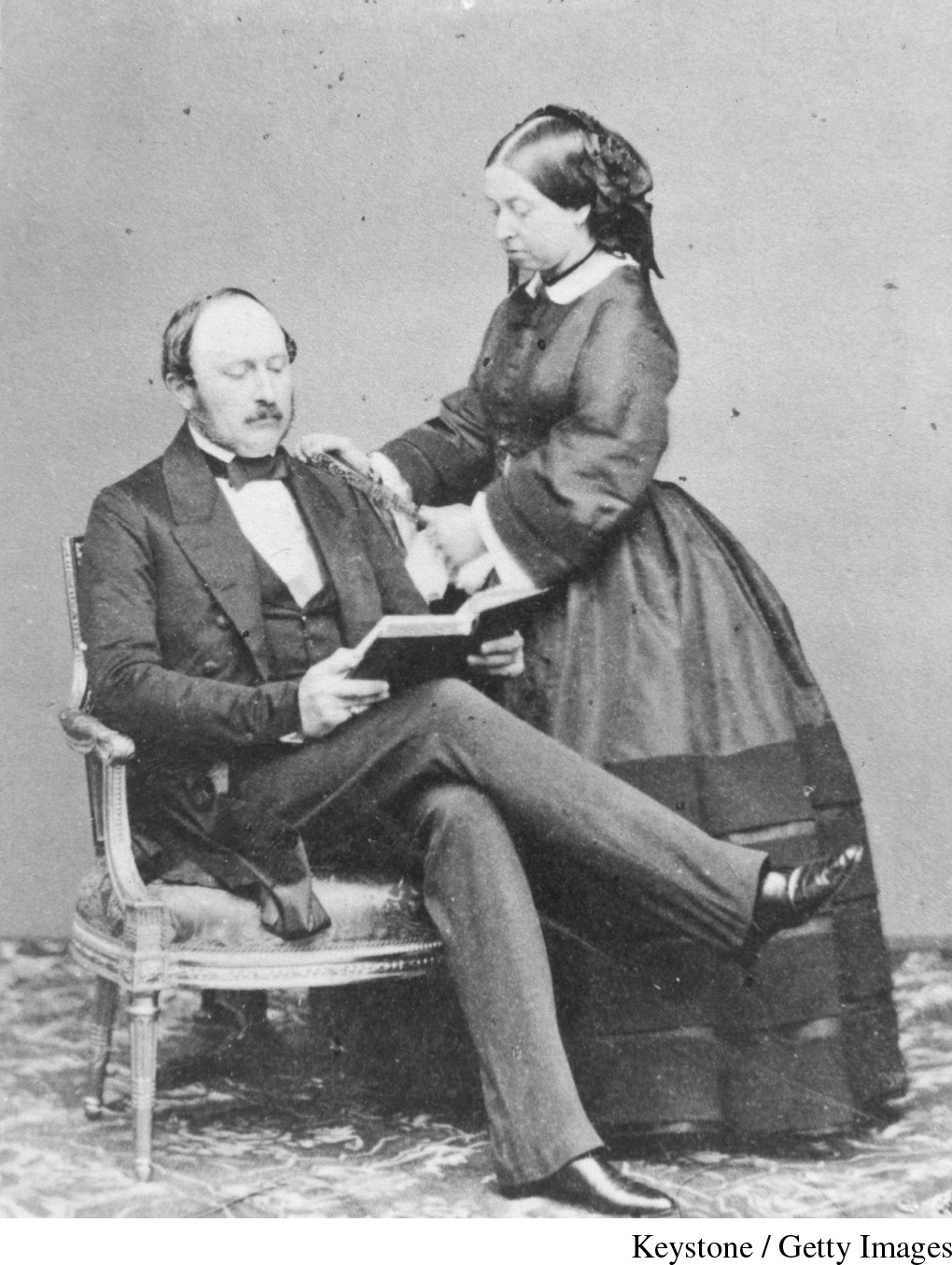Seeing History: Photographing the Nation: Domesticity and War


Fostering a common national identity among their citizens was important to many nineteenth-century European leaders, especially those, like Britain’s Queen Victoria, who sought to build unity and loyalty among their subjects. The new technology of photography, developed in 1839, served this goal admirably by enabling a more immediate connection between the public and its leaders and their policies. For example, with the new medium, carefully staged photos of royal families became available for the first time, circulating in a small format like today’s baseball cards among eager collectors. In the photo shown here, Queen Victoria and her husband, Albert, appear as an ordinary middle-class couple. Posing for many such photos, Victoria and Albert helped develop modern celebrity culture but also a national culture that transcended local identities.
The Crimean War was another shared experience for Britons, many of whom avidly collected photos from the front, for the conflict was one of the first ever to be photographed. Crowds flocked to exhibitions in major cities to view battle scenes (usually staged) and portraits of soldiers, like the one shown here of officers of the Fifty-seventh Regiment. How might this image have affected viewers? What could they learn from it about life on the front? How did it bring the war closer to home?
Both war photography and photography of national leaders, including U.S. president Abraham Lincoln with his wife, Mary Todd Lincoln, or France’s Napoleon III and Eugénie, were major ingredients of nation building. The new technology made lofty leaders and the faraway wars they prosecuted accessible—indeed, a part of everyday life—to individuals across the West and beyond. As millions of eyes gazed on these images, the nation’s people—wherever they lived—became one.
Question to Consider
What impression might viewers have formed about the royal couple and about the lives of the soldiers based on these photographs?